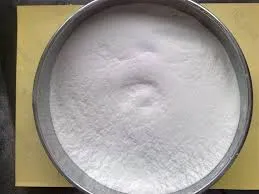
Dec . 07, 2024 13:05 Back to list
Exploring the Solubility of HPMC in Various Solvent Environments for Enhanced Applications
Understanding HPMC Solubility Key Aspects and Applications
Hydroxypropyl Methylcellulose (HPMC) is a versatile non-ionic cellulose ether that has gained widespread popularity in various industries, particularly in pharmaceuticals, food, and construction. One of the most critical properties of HPMC is its solubility, which significantly impacts its performance and application. This article aims to delve into the intricacies of HPMC solubility, its influencing factors, and its practical implications across different fields.
What is HPMC?
HPMC is derived from natural cellulose, modified to enhance functionality. Its chemical structure consists of hydroxypropyl and methyl groups attached to the cellulose backbone, which enhances its solubility in water and organic solvents. Thanks to its unique properties, HPMC serves multiple functions, including thickening, binding, and film-forming. In the pharmaceutical industry, for example, it is extensively used in tablets, capsules, and as a drug delivery agent.
Factors Influencing HPMC Solubility
HPMC solubility is influenced by several factors, including the degree of substitution, molecular weight, temperature, and pH of the solution.
1. Degree of Substitution The degree of substitution (DS) refers to the extent to which hydroxyl groups in cellulose have been replaced by methoxy and hydroxypropyl groups. A higher DS typically enhances the solubility of HPMC in water due to increased hydrophilicity. However, excessive substitution can lead to decreased viscosity and gelling properties, which could be counterproductive in certain applications.
2. Molecular Weight HPMC comes in various molecular weights, which significantly affect its solubility and functional properties. Generally, lower molecular weight grades are more soluble than higher ones, offering different performance attributes. For example, low molecular weight HPMC might be preferable for applications requiring quick solvation, while high molecular weight variants are often used for their thicker consistency and stability.
3. Temperature Temperature plays a vital role in the solubility of HPMC. As temperature increases, the solubility of HPMC typically increases, leading to faster dissolution rates. This property is particularly useful in processes where rapid mixing and hydration are required, such as in pharmaceutical formulations and food production.
hpmc solubility

4. pH Levels HPMC is relatively stable across a broad pH range, but changes in pH can affect its solubility and behavior in solutions. For instance, in a highly acidic or alkaline environment, the solubility profile may shift, impacting its performance in final products.
Practical Applications of HPMC Solubility
The solubility characteristics of HPMC make it a valuable ingredient across various industries.
- Pharmaceuticals In drug formulations, HPMC is often used as a binder and excipient, owing to its capacity to form gel-like structures and modify drug release profiles. Its solubility influences how quickly a drug dissolves and becomes available in the body.
- Food Industry HPMC is frequently included in food products as a thickener and emulsifier. Its solubility ensures that it disperses uniformly in food mixtures, contributing to texture and stability.
- Construction In the construction industry, HPMC is used as an additive in cement and mortar formulations. Its solubility trait is pivotal for improving workability and controlling the setting time of mixtures.
Conclusion
Understanding the solubility of HPMC is crucial for optimizing its use across various applications. By considering factors such as degree of substitution, molecular weight, temperature, and pH, formulators can tailor HPMC to meet specific needs effectively. As industries continue to innovate and expand their use of HPMC, ongoing research and development will be essential in unlocking new potentials of this critical cellulose derivative. As we progress, the versatility of HPMC combined with a solid comprehension of its solubility will undoubtedly pave the way for novel applications and enhanced formulations that improve functionality across diverse fields.
-
Versatile Hpmc Uses in Different Industries
NewsJun.19,2025
-
Redispersible Powder's Role in Enhancing Durability of Construction Products
NewsJun.19,2025
-
Hydroxyethyl Cellulose Applications Driving Green Industrial Processes
NewsJun.19,2025
-
Exploring Different Redispersible Polymer Powder
NewsJun.19,2025
-
Choosing the Right Mortar Bonding Agent
NewsJun.19,2025
-
Applications and Significance of China Hpmc in Modern Industries
NewsJun.19,2025







